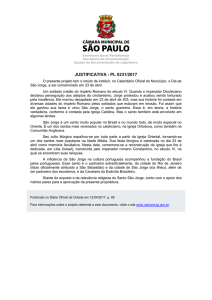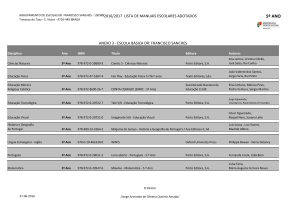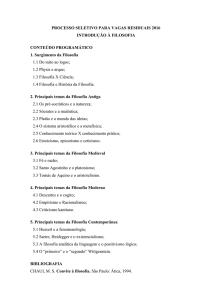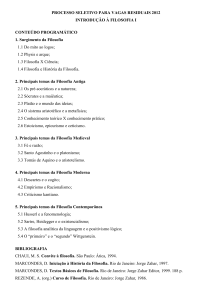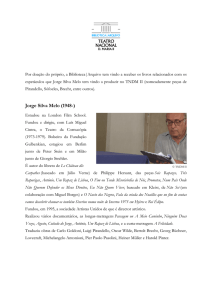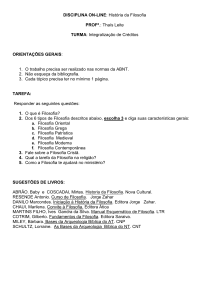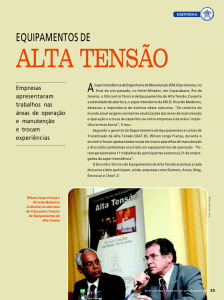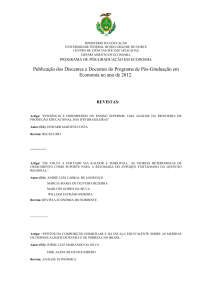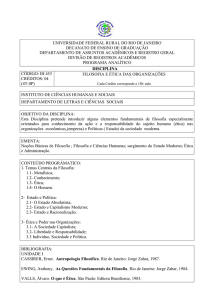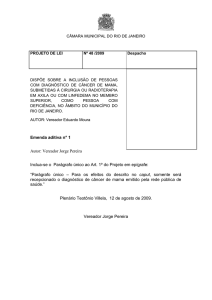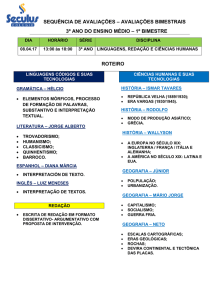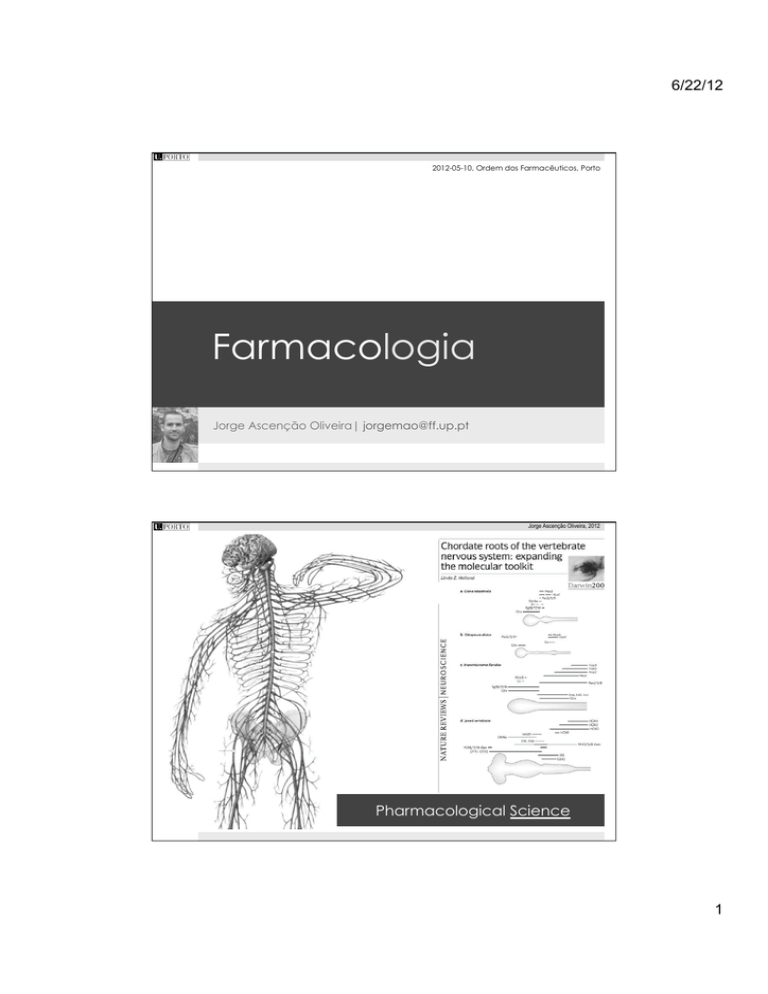
6/22/12
2012-05-10, Ordem dos Farmacêuticos, Porto
Farmacologia
Jorge Ascenção Oliveira| [email protected]
Jorge Ascenção Oliveira, 2012
Pharmacological Science
1
6/22/12
Jorge Ascenção Oliveira, 2012
Bonnie Bassler
Comunicação intercelular e Sinapses
2
6/22/12
Síntese
Armazenamento
Libertação
Terminação
Efeito
302
100,000
75,000,000
Modelos Experimentais [neurof.]
Imitar o Homo sapiens?
3
6/22/12
Investigação básica em humanos
Neurociência/Neurofarmacologia
Avaliação Risco/Benefício
4
6/22/12
Ensaios Clínicos
FASE 1
FASE 2
FASE 3
Efeitos adversos raros
Frequency of effect in
nonexposed controls
Example
Number of exposed
subjects required
1/100
Any congenital
cardiac deffect
1800
1/1000
Facial clefts
18,000
1/10,000
Tricuspid atresia
180,000
1/100,000
Myocardial infarction
1,800,000
Effect size = 2x; ! = 5%; " = 20%
5
6/22/12
Jorge Ascenção Oliveira, 2012
Farmacocinética vs.
Farmacodinâmica
“O que o organismo faz ao fármaco vs. o que o fármaco faz ao
organismo.”
Jorge Ascenção Oliveira, 2012
PK/PD => Posologia
Que quantidade? Com que frequência?
6
6/22/12
A.D.M.E.
Farmacocinética vs. Farmacodinâmica
Vias de administração
Entéricas vs Parentéricas ?
Route
Bioavailability
Characteristics
Intravenous
(IV)
100% (by
definition)
Most rapid onset
Intramuscular
(IM)
75 to !100%
Large volumes often
feasible; may be
painful
Subcutaneous
(SC)
75 to !100%
Oral
(PO)
5 to <100%
Most convenient;
First-pass effect may be
significant
Rectal
(PR)
30 to <100%
Less first-pass effect
than oral
Inhalation
5 to <100%
Often very rapid onset
Transdermal
80 to !100%
Usually very slow
absorption; used for
lack of first-pass effect;
prolonged duration of
action
Smaller volumes than
IM; may be painful
7
6/22/12
pH ?
ABSORÇÃO: barreiras e travessia
DISTRIBUIÇÃO: barreiras e compartimentos
8
6/22/12
METABOLIZAÇÃO e EXCREÇÃO
Jorge Ascenção Oliveira, 2012
Volume de distribuição (Vd)
Vd = Dose*/concentração
*quantidade de fármaco administrado | (C=n/V)
9
6/22/12
Jorge Ascenção Oliveira, 2012
Volume aparente de distribuição
Compartimentos, ligação a proteínas plasmáticas, metabolização
Compartment
& Volume
Examples of Drugs
Water
Vd
?
Total body water
(0.6 L/kg1)
Small water-soluble molecules:
eg, ethanol.
Extracellular water
(0.2 L/kg)
Larger water-soluble molecules:
eg, gentamicin.
Blood (0.08 L/kg);
plasma (0.04 L/kg)
Strongly plasma protein-bound
molecules &very large molecules:
eg, heparin.
Fat (0.2-0.35 L/kg)
Highly lipid-soluble molecules:
eg, DDT.
Bone (0.07 L/kg)
Certain ions:
eg, lead, fluoride.
1An average figure. Total body water in a young lean man might be
0.7 L/kg; in an obese woman, 0.5 L/kg.
Compartimentos, Volumes e Ex.s de Fármacos
10
6/22/12
Biodisponibilidade(x) = AUC(x) / AUC(i.v.)
Bioequivalência?
Biodisponibilidade & AUC (ASC)
Biodisponibilidade = Fração de fármaco que atinge a circulação
sistémica quando administrado por qualquer via. (i.v. = 100%)
CL = Velocidade de eliminação (VE)
÷ Concentração (C)
Ex. VE (mg/min) ; C (mg/ml) :: CL (ml/min)
CL (Total) = CL (renal) + CL (hepática) + CL (outros …)
CL (ordem 1) = Dose(mg) ÷ AUC(mg/ml " min)
Clearance (CL)
ou depuração
Ex. CL(Plasmática) = Vol. plasma livre de fármaco por unidade de tempo
11
6/22/12
pH ?
Taxa de filtração glomerular
CL (creatinina); (inulina) ?
Tempo de semi-vida
Tempo para:
Reduzir C. a metade (eliminação);
Duplicar C. (infusão contína).
t1/2 = ln2* " Vd ÷ CL
* ~0,7
Conc. em equilíbrio (CSS)
Qtdd administrada = eliminada
CSS = Vadmin (mg/min) ÷ CL (ml/min)
3.3 " t1/2 ~90% CSS ; (infusão contínua)
12
6/22/12
Jorge Ascenção Oliveira, 2012
Veloc. Admin SS
= Veloc. Elimin SS = CL " Conc. Alvo (TC)*
Ex. CL (ml/min) ; TC (mg/ml) :: Veloc. admin (mg/min)
Veloc. admin (oral) = Veloc. admin (inf. contínua) ÷ Biodisponibilidade (oral)
Dose manutenção (mg) = Veloc. admin (mg/tempo) " Intervalo admin (tempo)
Dose carga (mg) = Vd (volume) " TC (mg/volume)
PK/PD => Posologia
Que quantidade? Com que frequência?
*Target concentration (TC); Clearance (CL)
13
6/22/12
Drug
Oral
Availability
(F) (%)
Urinary
Excretion
(%)
Bound in
Plasma (%)
Clearance
(L/h/70 kg)
Volume of
Distribution
(L/70 kg)
Half-Life
(h)
Target
Concentrations
Toxic
Concentrations
Acetaminophen
Amoxicillin
Aspirin
Atenolol
88
93
68
56
3
86
1
94
0
18
49
5
21
10.8
39
10.2
67
15
11
67
2
1.7
0.25
6.1
15 mg/L
...
...
1 mg/L
>300 mg/L
...
...
...
Carbamazepine
70
1
74
5.34
98
15
6 mg/L
>9 mg/L
Chloroquine
89
61
61
45
13000
214
20 ng/mL
250 ng/mL
Diazepam
100
1
99
1.62
77
43
300 ng/mL
...
Digitoxin
90
32
97
0.234
38
161
10 ng/mL
>35 ng/mL
Digoxin
70
60
25
7
500
50
1 ng/mL
>2 ng/mL
Fluoxetine
60
3
94
40.2
2500
53
...
...
Gentamicin
Lithium
Nortriptyline
...
100
51
90
95
2
10
0
92
5.4
1.5
30
18
55
1300
2.5
22
31
...
0.7 mEq/L
100 ng/mL
...
>2 mEq/L
>500 ng/mL
Phenobarbital
100
24
51
0.258
38
98
15 mg/L
>30 mg/L
Phenytoin
90
2
89
Conc-dependent
45
Conc-dependent
10 mg/L
>20 mg/L
Prazosin
68
1
95
12.6
42
2.9
...
...
Propranolol
26
1
87
50.4
270
3.9
20 ng/mL
...
Salicylic acid
100
15
85
0.84
12
13
200 mg/L
>200 mg/L
...
Terbutaline
14
56
20
14.4
125
14
2 ng/mL
Tetracycline
77
58
65
7.2
105
11
...
...
Theophylline
96
18
56
2.8
35
8.1
10 mg/L
>20 mg/L
Tobramycin
...
90
10
4.62
18
2.2
...
...
Trimethoprim
100
69
44
9
130
11
...
...
Tubocurarine
...
63
50
8.1
27
2
0.6 mg/L
...
Valproic acid
100
2
93
0.462
9.1
14
75 mg/L
>150 mg/L
Vancomycin
...
79
30
5.88
27
5.6
...
...
Verapamil
22
3
90
63
350
4
...
...
Warfarin
93
3
99
0.192
9.8
37
...
...
Zidovudine
63
18
25
61.8
98
1.1
...
...
Como atuam os fármacos?
“A drug will not work unless it’s
bound”; “Magic bullet”
#
Paul Ehrlich (1854-1915)
Nobel da Fisiologia e Medicina em 1908
##########################################
Alvos (Recetores): Proteínas (enzimas, transportadores, canais iónicos,
recetores para ligandos endógenos); DNA, etc.
Exceções: Laxantes, Diuréticos osmóticos, anti-ácidos, expansores
plasmáticos, quelantes de metais pesados, etc.
14
6/22/12
Tipos de Recetores
!"#$%&'(%)%*%+,'
---./01234567.849'
Visualização de Recetores
Autoradiografia
MRI/PET
15
6/22/12
Imagiologia funcional (“single-cell”)
[Ca2+]i
Bright Field
#$m
Intracellular Ca2+ concentration
Mitochondrial membrane potential
Oliveira JMA
Jorge Ascenção Oliveira, 2012
Conceitos Fundamentais
PROBABILIDADE DE LIGAÇÃO
(Reserva de) Recetores
Ocupação
•!Afinidade
Ativação
•!Atividade INTRÍNSECA
(? Interesse histórico ?)
•!Eficácia
AGONISTA:
total, parcial, inverso
ANTAGONISTA: (não)-competitivo | sin/alo-tópico
(IR)-Reversível | (IN)-Ultrapassável
16
6/22/12
Jorge Ascenção Oliveira, 2012
Recetores e ligandos; Ocupação
Probabilidade de ligação
Afinidade
Selectividade (fármaco) vs. Especificidade (ligação)
Distâncias e forças de ligação
17
6/22/12
Jorge Ascenção Oliveira, 2012
Como medir (quantificar) a
AFINIDADE ?
Ocupação; ligação específica ?
Ligação específica vs. inespecífica
18
6/22/12
Total binding
Total
Non-specific
Non-specific
Total
Non-specific
Binding of the tritiated cannabinoid receptor
agonist, [3H]-CP55,940, to sections of human
hippocampus (A) and basal ganglia (C).
Total
Non-specific
Dark grey areas represent high levels of binding.
Non-specific binding of [3H]-CP55,940 is defined
in adjacent sections of hippocampus (B) and
basal ganglia (D) incubated in the presence of
excess unlabelled CP55,940.
Quantificação
da afinidade
Ex.
Radioligandos
19
6/22/12
Jorge Ascenção Oliveira, 2012
Ensaios com Radioligandos
Saturation Binding
Competitive Binding
Ki
Cheng & Prusoff Eq.
Kd
Equilibrium dissociation constants
Kb
?
Jorge Ascenção Oliveira, 2012
Como medir (quantificar) a
ATIVIDADE?
Diferenças entre: “ATIVIDADE INTRÍNSECA”, EFICÁCIA E POTÊNCIA?
“Maximal Agonist Effect” (M.A.E);
EC50
20
6/22/12
Ensaios funcionais; Parâmetros de atividade
Eficácia
Potência
EC50
pEC50
(pD2)
Potência vs. Eficácia
21
6/22/12
Jorge Ascenção Oliveira, 2012
Ocupação vs. nível de ativação
“Atividade Intrínseca” (!) ?
-1
0
1
Maximal Agonist Effect (M.A.E.)
Agonismo inverso?
Modulação da atividade basal
22
6/22/12
Agonistas totais vs. parciais
Z
X
Y
EC50 vs. pEC50 (pD2)
Ocupação vs. ativação
Potência vs. eficácia
23

